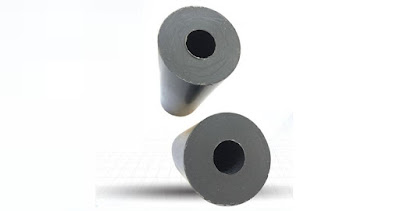Polytetrafluoroethylene (PTFE) is a synthetic material accidentally invented in the late 1930s. It was when a chemist was trying to develop a new type of perfluorethylene-based refrigerant. Rather than achieving a chlorofluorocarbon, the scientist found that the perfluorethylene used in the process reacted with the iron content of its container and polymerized under pressure.
This new material was distributed on a commercial scale and was eventually known as PTFE. After several decades later, it was known as the first non-stick kitchenware.
Where is PTFE is used?
It is used for applications where sliding parts are needed like plain bearings, gears, and slide plates.
Powdered PTFE is used in pyrotechnic compositions as oxidizers together with powdered metals.
PTFE is also used in optical radiometry. Sheets made from PTFE are used as measuring heads in spectroradiometers and broadband radiometers because of its capability to diffuse a transmitting light nearly perfectly.
PTFE is also used to coat certain types of hardened bullets to prevent the increased wear on the firearm’s rifling that would result from the harder projectile.
It is also used laboratory materials such as containers, stirrers, and tubing.
It is used as a thread seal tape in plumbing applications.
Why is PTFE used in electronic components?
PTFE has exceptional insulating properties that make it ideal for electronic components. It is non-conductive, meaning; it is resistant to high electric fields. It is also resistant to heat, water, and chemical corrosion. It is also used on producing laboratory equipment and accessories that come into contact with hydrofluoric acid.
PTFE possess a very low frictional property. This makes PTFE suitable for manufacturing parts that need to resist friction like ball bearings and gears.
Other characteristics of PTFE
- * an excellent barrier to gas, moisture and heat
- * has remarkable chemical resistance and is insoluble in all known solvents
- * attacked only by molten alkali metals and fluorine at high temperatures
- * has excellent resistance to acids, alkali and solvents
- * very lubricous
- * can be sterilized by autoclave, gas, dry heat and chemical disinfectant
- * Disadvantages of using PTFE
One of the most common uses of PTFE is for cookware. PTFE pans cannot be used if you see scratches or cracks on it. It cannot be used after it deteriorates. It begins to deteriorate after the temperature of the cookware reaches 260 ˚C and decomposes above 350˚C. This degradation by-product can be lethal to birds and can cause flu-like symptoms in humans.
Issues in recycling PTFE
Like any other materials, recycling decreased the properties of the original material. In PTFE, many of its properties are good that it is still feasible after recycling. In some studies, 5-10% ration would still allow the material to pass off as pure PTFE. One of the main issues with recycled PTFE is that it is not applicable for long term uses.
But, to sum it all up, recycled PTFE will always have inferior properties to PTFE and cannot be consistent over time. It is always better to expect that it can be compromised and that it is priced a little lower than the original.














